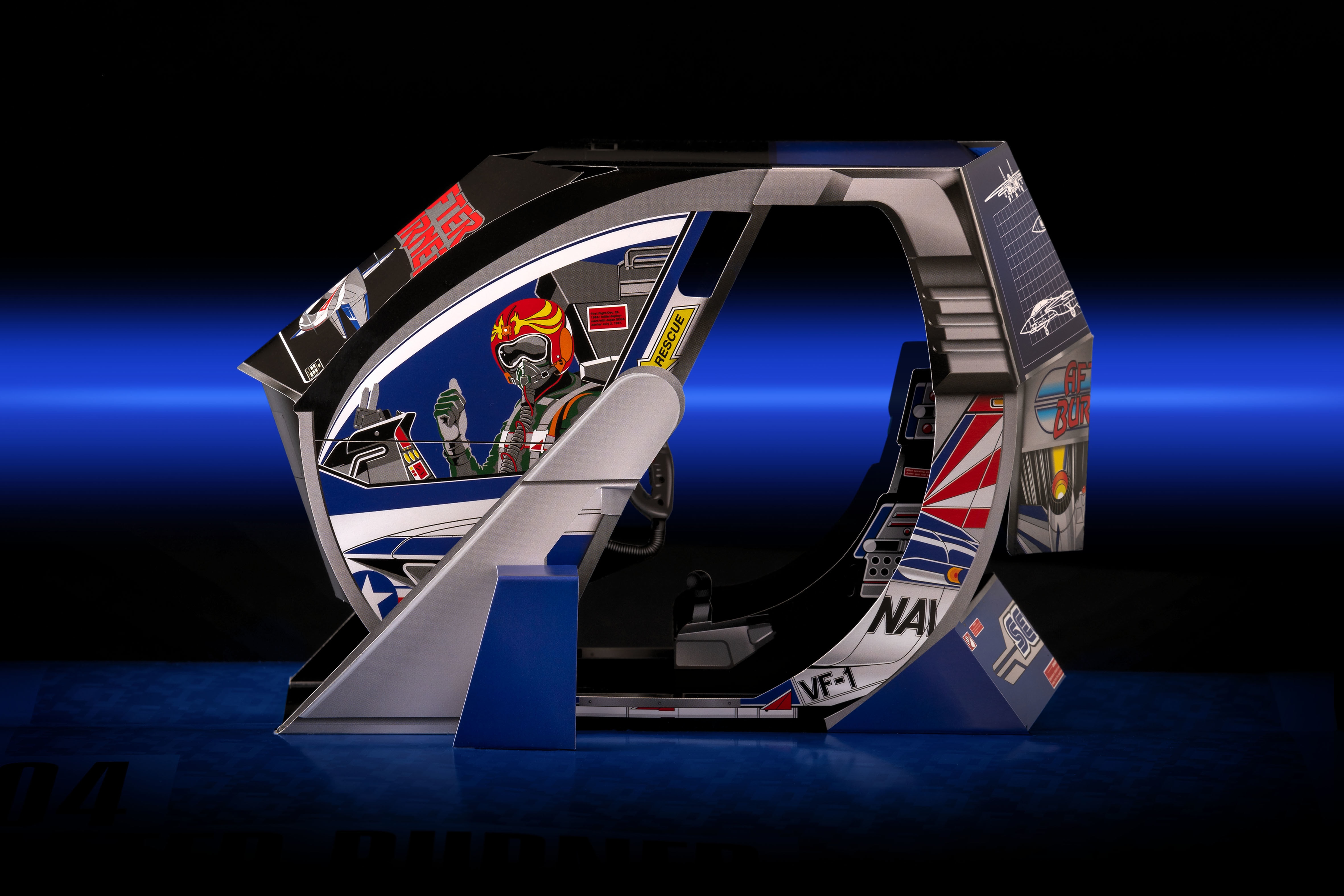Create a free profile to get unlimited access to exclusive videos, sweepstakes, and more!
This throwback pop-up book brings your favorite 1980s Sega arcade cabinets to life

There’s no denying our world of mobile games and modern console streaming is a new golden age for video games, but the 1980s still takes the prize in one category — the arcade.
The 1980s saw video game companies bust out of the box (literally and figuratively), developing ambitious arcade cabinets designed to do everything from put you in the cockpit of a spaceship to straddling a motorcycle. A new pop-up art book from Read-Only Memory aims to preserve those iconic designs as paper sculptures, spotlighting some of the most iconic designs from Sega’s history.
The book, Sega Arcade: Pop-Up History, lays out cabinets such as After Burner, Space Harrier, Thunder Blade, Hang-On, Out Run, and Power Drift in glorious 3D. The book retails for £35.00 (approximately $45.50 USD) and features six large-scale pop-up sculptures, as well as a 32-page editorial section featuring contributions from legends such as video game designer Yu Suzuki (Hang-On, Shenmue). The editorial section comes from Guardian games writer Keith Stuart, who looks back at the history behind these classic cabinets.
Project director Darren Wall told SYFY WIRE the book is a labor of love, aiming to preserve these groundbreaking designs that remain effortlessly cool decades later.
“Sega's forays into the arcade game scene were so often peerless creations. In an industry now concerned with the potential of VR, Yu Suzuki's vision of games as immersive, 'full-body' experiences feels like an extremely contemporary concept – making it all the more remarkable that some of these cabinets were created over 30 years ago,” he explained. “I'd wanted to make a book on this subject for many years, and it was only when I met paper engineer Helen Friel that it became clear how together we could create something that did justice to these amazing machines.”
As for actually pulling it off? Well, as you’d probably imagine, it wasn’t always easy figuring out how to bring these Sega cabinets to life in 3D with nothing but paper (and making all that work in book form to boot).
"We had to prototype the After Burner cabinet several times, as it proved to be the most challenging form to get right,” Wall said. “The cabinet features a completely enclosed seat, so the model had to work hard to hold its form and match the details of the actual machine. I think ultimately this is my favourite model in the book too, as it's so incredibly detailed.”
Sega Arcade: Pop-Up History is available to order now.














